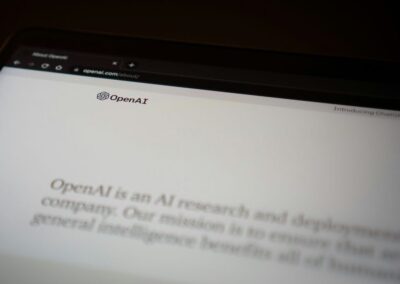So many applications, so many vendors, so few dollars!
In the last few years, we have seen a virtual explosion in artificial intelligence technologies that could be applied to healthcare. Not surprisingly an enormous number of new AI products, tools, and new vendors have entered the healthcare market, typically with sophisticated presentations and huge promises.
How can healthcare executives most effectively deal with this emerging technology and make the right decisions for the organization? And at the same time, how can they do so in the face of increasing financial scrutiny for the stewardship of finite healthcare dollars?
Today, I’m reviewing how medical administrators and their healthcare organizations can evaluate and choose AI tools wisely.
AI is a different animal
It is common for new technologies to hit the health care space—we have seen it many times before. But artificial intelligence is much more complicated. First of all, AI capabilities are expanding exponentially in front of our very eyes, with computing power doubling every year and generative AI learning and improving rapidly. Also, the technology is allowing increased connectivity among neural networks, the human brain directly, and other peripheral devices. Keeping up with these advances is a formidable job in itself.
Consequently, the product that is offered today will pale with the capabilities of the product of tomorrow. Also, with multiple competitors striving for market share, products may appear in the marketplace that are not ready for “prime time.” Countless vendors would be happy to assist you on how to spend your resources. How does one know what to believe?
Develop and implement a strategic evaluation and prioritization process
In order to be successful, your organization must develop an AI strategy, a methodology for evaluating and comparing healthcare AI tools, and a selection process that makes fiscal sense in the face of competing priorities and scarce dollars.
Many organizations are now convening multidisciplinary AI councils for this specific purpose. All major AI initiatives are funneled through and vetted by this committee. In order to compare “apples to apples” and level the playing field for potential products, an objective evaluation methodology must be applied. Potential products must be rated on the basis of Value and would be given a score based upon the three components of Value: quality outcomes, user or patient satisfaction, and cost-effectiveness. These scores could be used to differentiate the various products that are being considered.
Given finite financial resources, it is impossible to approve all requests. Thus, the prospective products must be prioritized. Many of these may be specialty driven, and the organization must decide which specialties are most critical to the overall strategic plan.
It is helpful to consider the economic definition of cost: the true cost of a product is not its actual dollar amount, but what other product could have been purchased for that same amount instead. So, for each decision made, one must also consider the other products or opportunities that will not be considered. It is only after this vetting process that recommendations should be made moving forward.
Potential healthcare AI applications to consider
There are many potential areas in healthcare where AI tools can assist clinicians and administrators alike. Some are more developed than others. The following is a brief review of what AI applications are currently available—both on a clinical and operational level—and a brief assessment of where they are today. Specific brand products will not be mentioned in this overview.
Clinical outcomes improvement
Ambient clinical intelligence: This is one of the most exciting applications of AI in healthcare. Generative AI and voice recognition technology combine to create real time documentation of patient visits that is available for the clinician to approve immediately following the visit. Medical record documentation is a huge provider dissatisfier, and any efforts to improve this aspect of care would be appreciated. There are multiple vendors that use ambient clinical intelligence, and early returns appear very promising. Most institutions should consider some form of ambient clinical intelligence to decrease documentation time, increase quality of notes, and provide a more satisfying provider experience. As the technology improves, these products will become much more effective and likely become mainstream. Organizations need to strongly consider a strategic approach to this technology.
Clinical decision support
There are two components of clinical decision support: earlier diagnoses of disease and concurrent monitoring of existing disease. This is a huge opportunity where AI could vastly improve clinical performance. Examples include earlier diagnoses of abnormal chest X-rays, mammograms, heart murmurs, and mental health issues, just to name a few. Enhanced disease monitoring is available for sepsis, atrial fibrillation, and adverse drug interactions. This technology has the potential to be used in many common disease processes.
There are many vendors who are promoting products in clinical decision support. It should be noted that the cost of these products must be weighed against the actual number of patients that might receive benefits, especially if the medical condition is not common in your setting. Certain medical departments would use this technology more than others. Once again, a great promise, and enhanced AI could deliver very promising results down the road.
Personalized medicine
One of the huge advantages of AI is the ability to analyze large databases and review medical literature to craft a unique order set or protocol for an individual patient, taking into consideration the specific medical history, genetics, medications, etc. for that patient. Personalized medicine will allow each patient to receive optimal care based upon their individual needs. Although mostly in the initial stages, this technology will become increasingly mainstream over the next few years.
Operational enhancement
Revenue cycle management
Think of AI as the “air traffic control” mechanism to monitor all aspects of the revenue cycle process proactively and instantaneously. The cycle begins with the medical record. Thus, revenue cycle management piggybacks ambient clinical intelligence—the real time production of the provider encounter. From that record, the appropriate billing codes would be determined by AI providing an instant “clean claim” that could be sent out promptly. AI would monitor every step of the cycle from claim submission to potential denial issues, to the ultimate receipt of payment. Numerous products are currently available in this area that could both increase total reimbursement and reduce time in accounts receivable.
Supply chain management
As with revenue cycle management, AI could oversee every aspect of the supply chain including planning, present assets management, procurement, life cycle management, logistics, etc. It could also forecast future trends and anticipate potential shortfalls long before they occur. Current products are less developed than those for revenue cycle management, but there are still a host of options to consider.
Scheduling/workflow optimization
This technology would apply to operating suites, ASC’s, procedures, and in-patient beds. The AI technology could predict surgical case duration, coordinate flow of care, and better utilize block time. It could optimize patient throughput in the hospital, and also better forecast census peaks and valleys to better predict future staffing needs. Again, many products are available, both new to market as well as existing products that now incorporate artificial intelligence.
Critical pointers in the decision process
The evaluation and vetting process must be a top priority for the organization. Here are some key points to consider.
- Vendor relationships will be more important than ever—especially as the technology evolves. Also, as the technology evolves, all products can be enhanced. Will your product be able to adapt to these changes?
- Interoperability and compatibility will be critical, as the technology must fit into the overall IT information flow in the system.
- The true cost of the new product must be considered. What else could have been purchased instead?
Artificial intelligence promises to revolutionize medical care, bringing new AI tools to the healthcare field seemingly every week. Taking the initial steps to strategize around high-priority areas will be of the utmost importance for the success of your organization.
Need to prepare your medical organization for AI implementation? Reach out to learn more and to book SMB Health Consulting for a speaking engagement.




